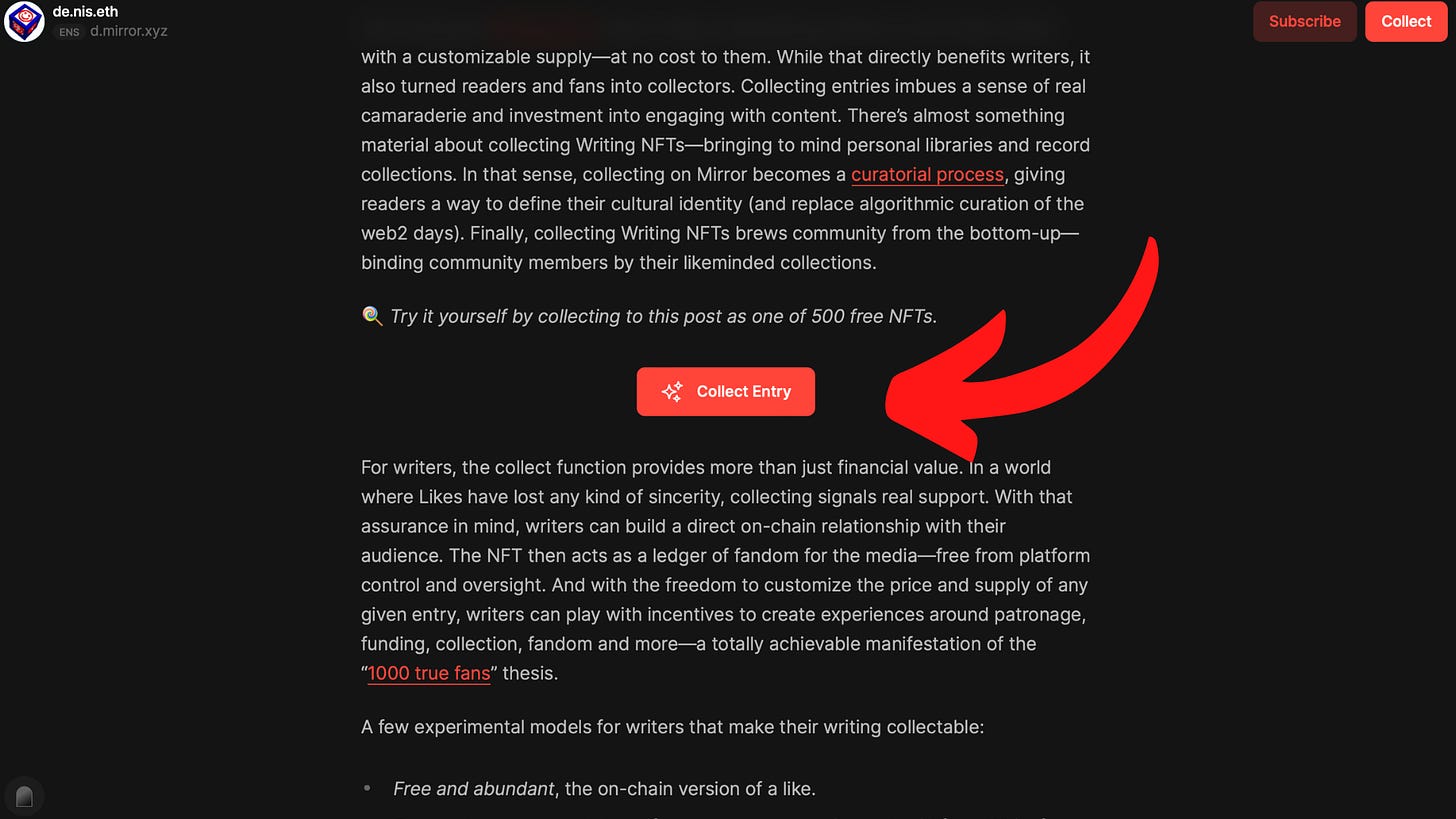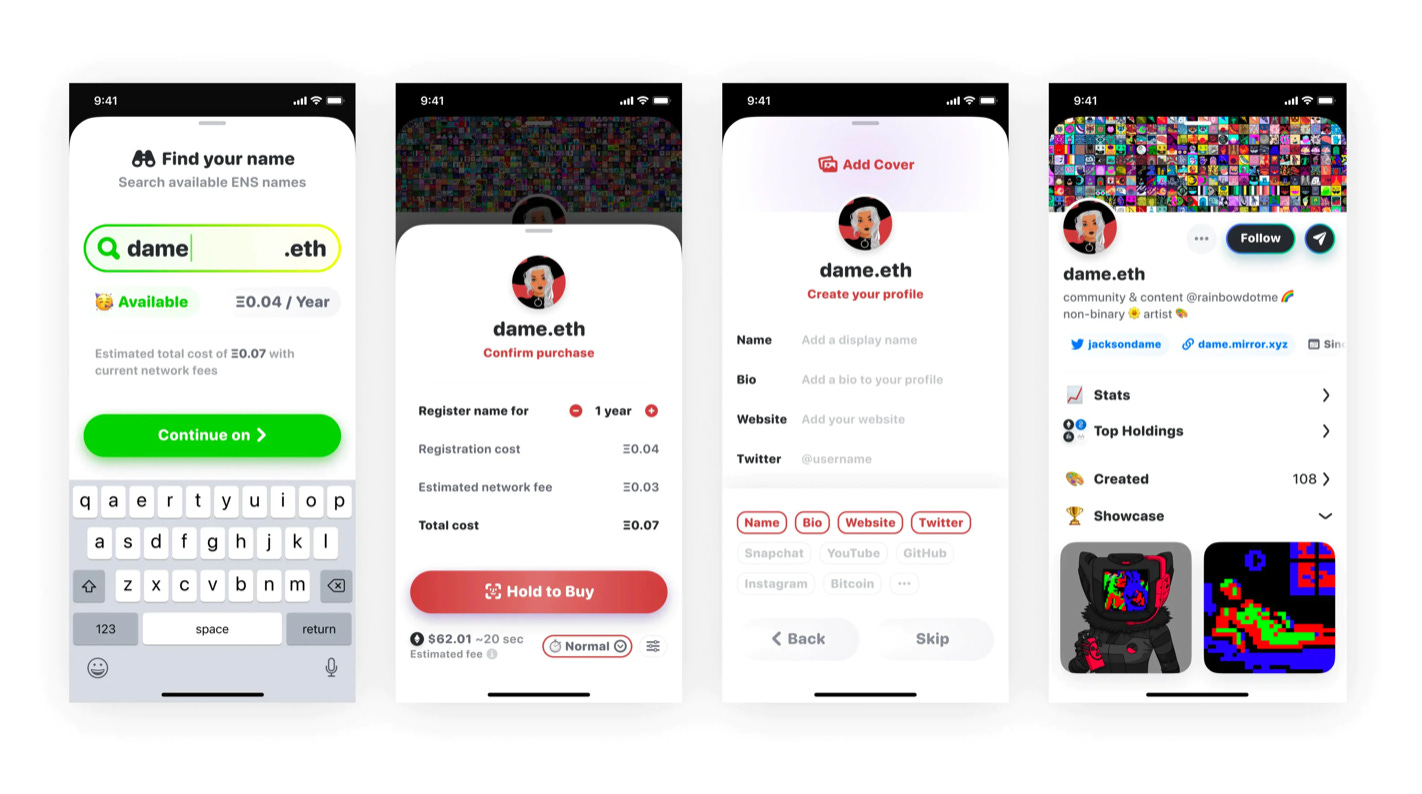Writing NFTs As The New Primitive For Content Discovery

The more I search for new perspectives on specific topics for my essays, the more I realize the difficulty of finding hidden gems and quality content on the web.
From Twitter to Google, ranked results and recommendations have become the dominant mode of exploring information online, and when I try searching for “Web3” on google, I find dozens of marketing garbage content on NFTs before (if ever) being suggested to read Chris Dixon’ canonical essays.
The harsh truth is, discovery is optimized for products, not people.
All social networks are built around one fundamental design: the feed. This isn’t an accident—it’s a choice that maximizes the platform’s ability to display ads and maximize revenue.
We rely on these centralized platforms for content distribution, and their feeds function like highways that don’t let you discover gems outside the mainstream.
The overabundance of media has resulted in increasingly niche audiences in the last years, and centralized platforms can’t get up to speed fast enough to show us the content we want.
In short, discovery on existing web2 media networks is broken.
In the past months, I’ve become more and more interested in a new class of flexible, boundary-spanning primitive: writing NFTs.
Their promise is to allow people to stop relying on platforms that maximize readers’ time on their feed, but relate to other people to show them good content.
Individuals would no longer have to stay within a platform, but could now move more easily across media and platforms, within one set of protocols, owning and transporting their content to create their perfect NFT-mediated experience.
I found David Phelps articulating this paradigm shift best:
“When people own their own content, including its data and metadata, they own its distribution as well. They become the new intermediaries, and people become the new platforms.”
Writing NFTs would allow anyone to become their own search discovery engine, helping more writers get discovered, and are a chance to flatten the inequalities of web2 media —not just between rich and poor creators, but rich platforms relative to all creators.
So How Would this Play Out Exactly?
By minting their articles as NFTs for their fans to collect, writers would let their readers own, transport, and compose with their content, allowing creation and distribution to happen at the same time.
Instead of having fans solely “liking” content on a centralized platform, readers would collect and add this content to their wallet, creating a new space accessible by anyone, a space uncensorable, interoperable, and easy to build on top of.
With their on-chain collections, these new curators would expand their voices through the people she supports. As Kairon explained it well in a recent essay:
Through trusting her (collector) taste and expertise enough to use her as my starting point; she gets reputation, mentions, and growth: exactly what any creator needs. She becomes a node in my exploration chain, and is rewarded with a bigger reader base as a result.
With this new habit, fans would automatically become curators, and while they may have less input on actual posts, the very fact they organize and curate content around a theme serves a larger goal—to appeal to and be consumed by a social niche audience.
And for writers, having collectors means getting a list of wallet addresses and a direct access to their fans without relying upon anyone.
In this new paradigm, the line between being a fan and a creator is blurring and completely reinventing the “fan-creator” relation.
The Web3 application Mirror is already building the infrastructure to support such a future for writers. They allow readers to collect articles they liked as NFTs, with the experience directly embedded into the article.

With more people starting collecting writing NFTs, Web3 wallets could one day become the main profile of writers, and we could even envision a new form of curation to emerge – one where readers create wallets for curating articles from specific niches – where each wallet becomes a new media.
We could also one day witness the rise of experiments leveraging collectors as catalysts for content ideas. The biggest fans (aka. collectors) could choose the topic of the next article through voting contests.
But while extremely exciting (at least for me), we’re not there yet.
For a future to emerge where NFTs are becoming a new primitive for curation, future wallets will have to not only focus on transactions but be native tools built around personalization, navigation, interoperability, and integrating strong social components.
They will need to reflect much more on who we are and be inherently social.

Rainbow Wallet – A good example of “social” wallet.
These new web3 wallets, such as Rainbow, as opposed to current traditional wallets like Metamask, will be much more like your LinkedIn, Twitter or Substack than your bank account. You’ll share your wallet freely with friends and platforms, controling the content you want to share and the categories you want to highlight by granting, revoking, and sharing partial access to it.
You might even soon be able to read articles directly from your wallet.
Closing Thoughts
I’ve mostly talked about writing NFTs and writers in this article, but I believe the same mechanisms of on-chain curation will be applied in every industry.
The solution for solving the current discovery problem comes down to a fundamental change in how we think about the internet and content creation: from a top-down model where central authorities control what we see to a bottom-up model where everyone has a voice and can be compensated for their work.
In this new model, as a writer, having trusted sources and building up your curatorial network will become essential —and this upfront work will become the price to pay to access great content that doesn’t rely on centralized platforms.
The question of ownership vs. distribution has always been central in Web3, and writing NFTs is a chance for creators and fans to own and distribute content simultaneously.
We obviously still have a long way to go before seeing this future come true, but I already see the habit of collecting writing NFTs emerging among my writer friends and can only see this habit adopted by more writers in the next months.
This article was written by : Eliot Couvat// In collaboration with: Global Coin Research












